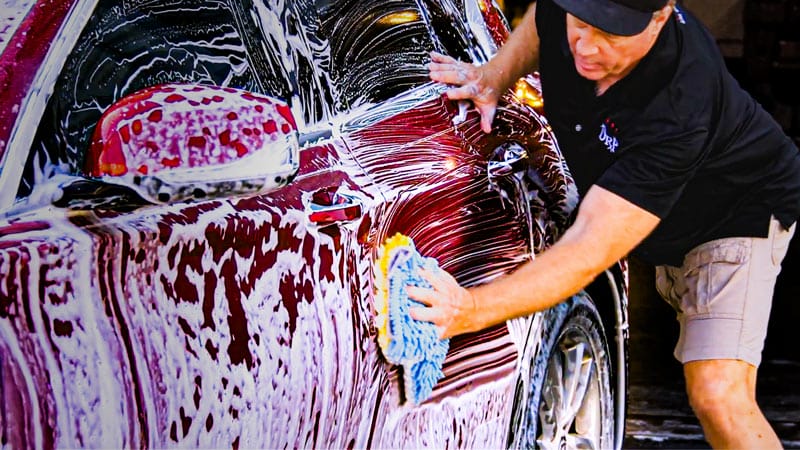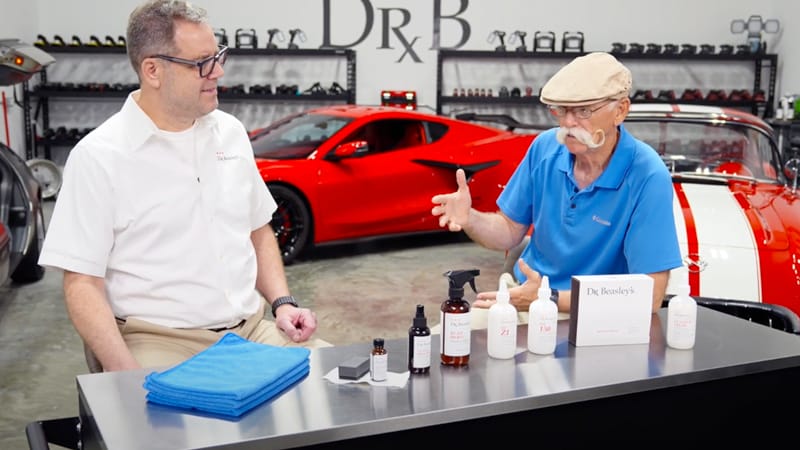Last Updated November 11, 2024
Suede is a soft, fuzzy leather made from the underside of animal skin. While suede is prized for its pliable, luxurious feel, its cost and use of animal skin have led to the development of synthetic alternatives called faux suede or microfiber suedes (“microsuedes”).
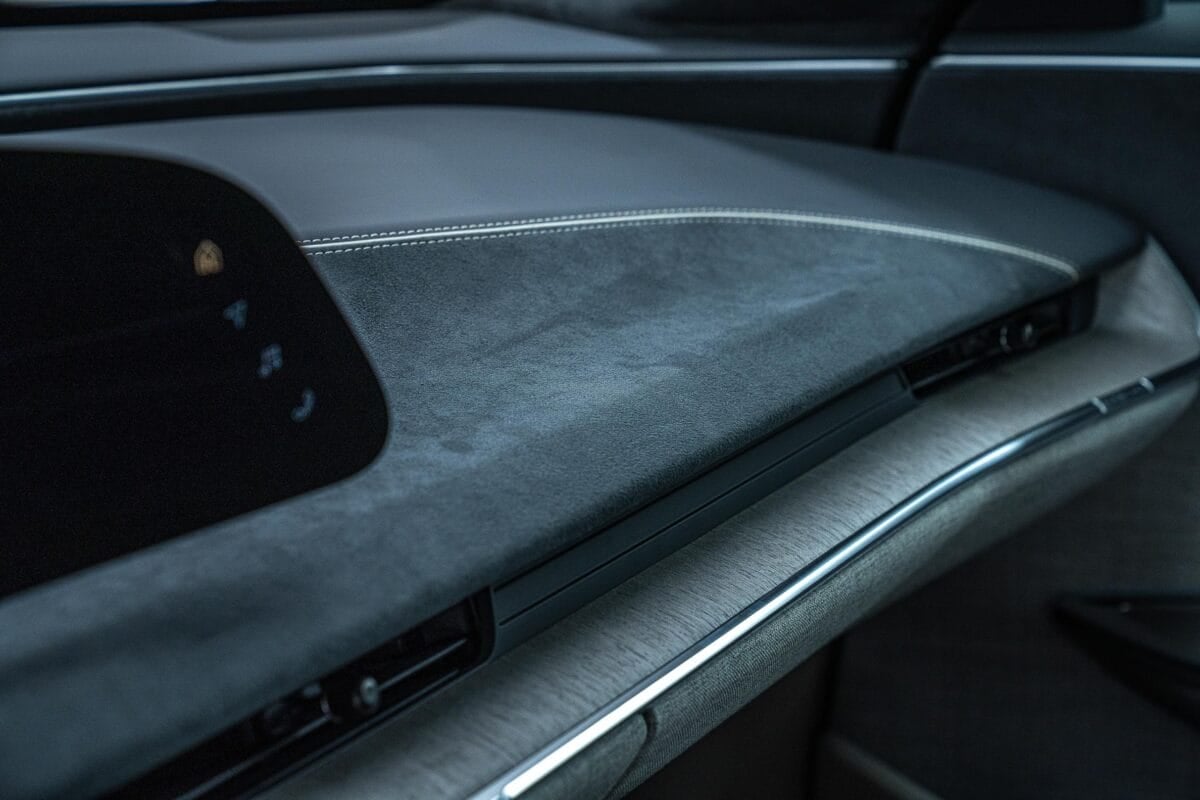
In this article, we’ll look at the different types of faux suedes and compare them to conventional suede made from animal hide. These different types of microsuede include Alcantara, Dinamica and Ultrasuede. We’ll also cover how to clean these fabrics.
What is Alcantara?
Made from a blend of about 68% polyester and 32% polyurethane, Alcantara is one of the most popular faux suedes and is commonly seen in high end car interiors, furniture, purses and shoes. It is manufactured by Alcantara S.p.A in Terni, Italy.
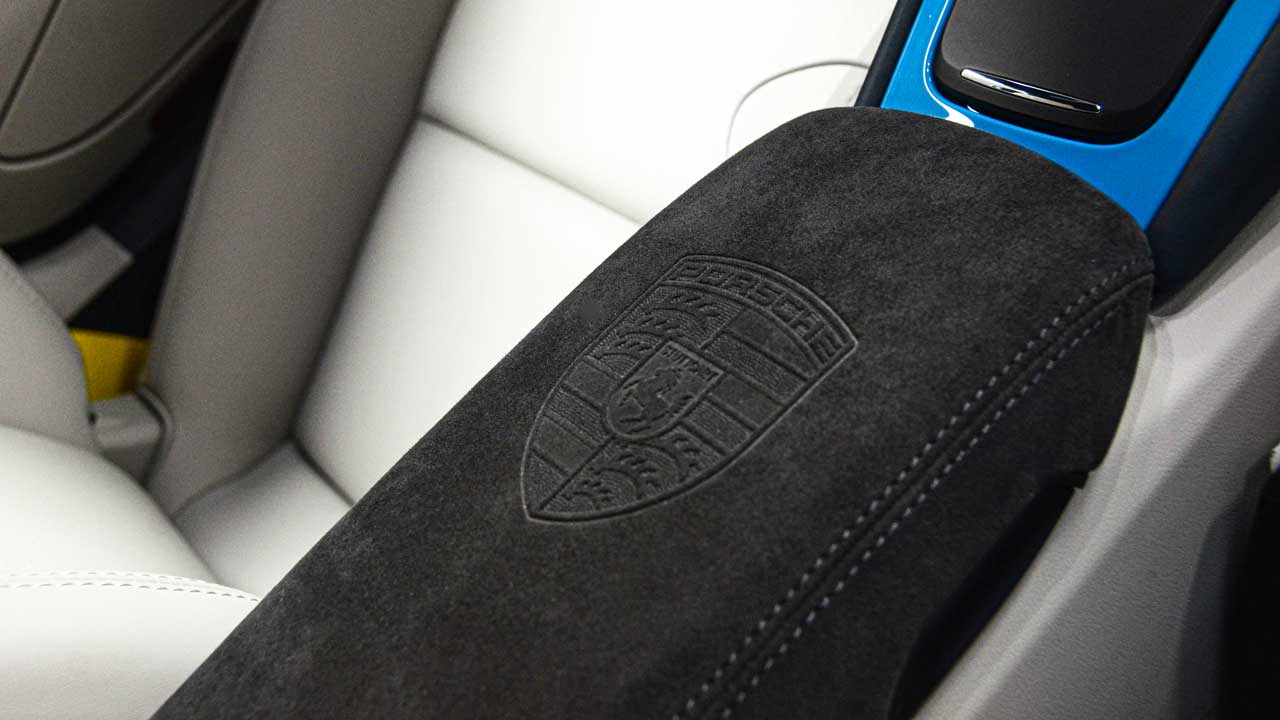
Who Invented Alcantara?
The microsuede called Alcantara was originally invented by Japanese scientist Dr. Miyoshi Okamoto for Toray Industries in 1970. Dr. Okamoto called the material “Ecsaine”, and the material is still sold under that name in Japan to this day. In Italy, the material was sold as “Alcantara” as a product of Alcantara S.p.A. It was sold as “Ultrasuede” in other markets.
What’s the Difference Between Alcantara and Suede?
Alcantara is made of polyester and polyurethane, two synthetic materials. Suede, on the other hand, is an animal product made from the underside of animal hides such as deerskin.
In terms of durability, suede wears more easily than Alcantara, making Alcantara a superior choice for high-traffic surfaces like steering wheels or couch cushions.
In terms of feel, Alcantara is generally softer than suede. It can, however, be less “grippy” than suede, so racing enthusiasts may want to use high-grip racing gloves with Alcantara steering wheels.
Alcantara is also easier to clean, with several dedicated cleaners available online. It generally keeps its appearance more uniform than suede with less irregularity in surface texture.
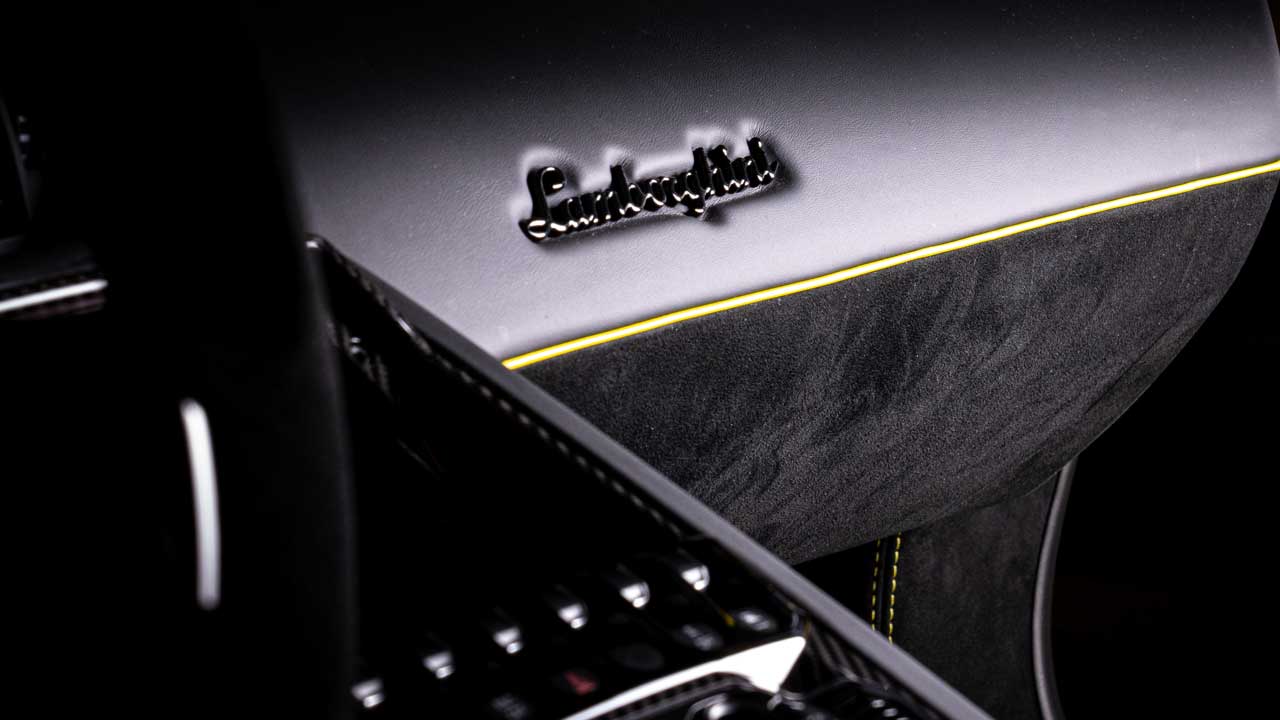
What’s the Difference Between Alcantara and Ultrasuede?
Alcantara and Ultrasuede are different brand names for the same material originally developed by Dr. Miyoshi Okamoto. Alcantara is made by Alcantara S.p.A in Terni, Italy while Ultrasuede is produced in Japan and around the world.
Beyond being two different brands, the only other difference between Alcantara and Ultrasuede is in their exterior appearance and automotive upholstery options.
In terms of appearance, Alcantara has a more mottled look while Ultrasuede has a rich, consistent color.
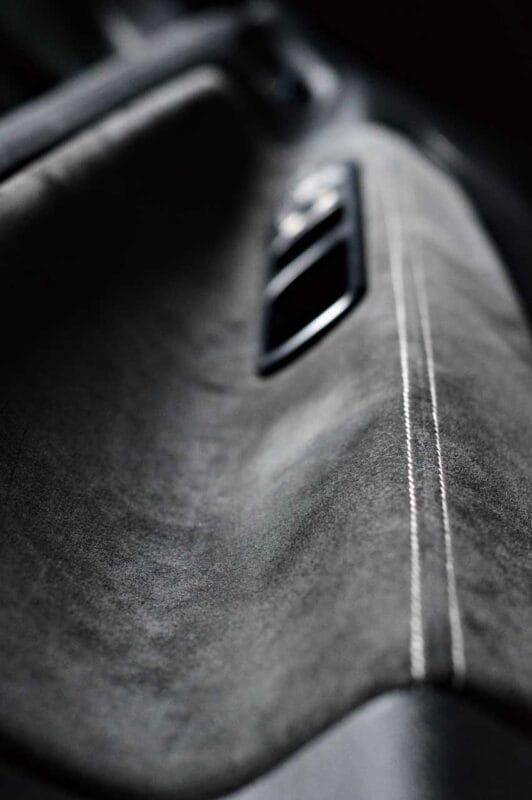
In terms of automotive upholstery types, Alcantara offers a number of options including Cover, Compact, Panel, Perform, Soft and Formal. Each kind has a different texture and look and comes with a backing so they can all be used for seating.
Ultrasuede, however, has only two automotive options: Ultrasuede Ambiance, which has no backing and is best for trim, and Ultrasuede Milano, which has backing and is suitable for seats.
Overall, Alcantara is more popular as a high-end fabric. This is likely due to its prevalence in Italian exotic and sports cars.
What’s the Difference Between Alcantara and Dinamica?
In the past decades Dinamica has emerged as an alternative “microsuede”. This material, made by the Italian company Miko S.r.l., was invented in 1997 and uses recycled PET (polyethylene terephthalate) fiber in its polyester/polyurethane blend.
Dinamica is thicker and less expensive than Alcantara.
Beyond the difference in ingredient source, Dinamica is on average thicker (0.9 – 1.1 mm) than Alcantara (0.83 – 1.0 mm). Dinamica is also less expensive than Alcantara.
Miko claims Dinamica is a more breathable and durable fabric as well, though we haven’t found any hard numbers to back up these claims.
What Cars Have Alcantara? What Cars Have Dinamica? What Cars Have Ultrasuede?
Different car manufacturers use different brands of microsuedes for their vehicle interiors. There’s also plenty of overlap, with some manufacturers using both depending on model year. Here’s a rough breakdown of what OEM uses what material.
Cars That Have Alcantara
- Lamborghini
- McLaren
- Ferrari
- Porsche
- Bugatti
- Maserati
- Alfa Romeo
- Aston Martin
- BMW
- Lotus
- Nissan
- Chevrolet
- Ford
- Tesla
- Mercedes
Cars That Have Dinamica
- Porsche
- Chevrolet
- Volkswagen
- Jeep
- Mercedes-Benz
- Land Rover
- Audi
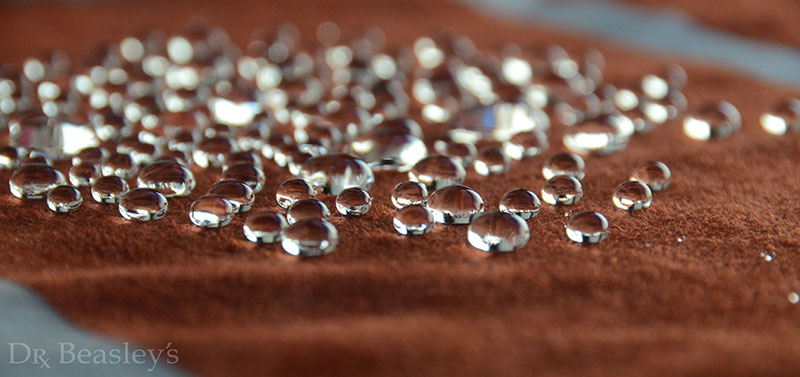
Is Alcantara Waterproof?
Alcantara is not waterproof, but it is water-resistant to some degree. This means it can handle small spills or light moisture without absorbing the liquid immediately, giving you time to clean it up before it soaks in. However, if the material is exposed to large amounts of water or left wet for a long time, it can absorb moisture and potentially stain or get damaged.
To protect Alcantara, it’s important to clean spills quickly using a damp cloth or a cleaner specifically made for Alcantara. Avoid soaking the fabric, as too much water can damage its texture and structure. Alcantara is designed to be durable and easy to maintain, but it is not meant to replace waterproof materials like vinyl or coated leather.
If you want extra protection, you can use a fabric protector spray designed for suede or Alcantara to make the surface more resistant to water and stains. Always test any product on a small, hidden area first to avoid damage. Regular maintenance and quick attention to spills will help keep Alcantara looking and feeling its best, even though it isn’t fully waterproof.
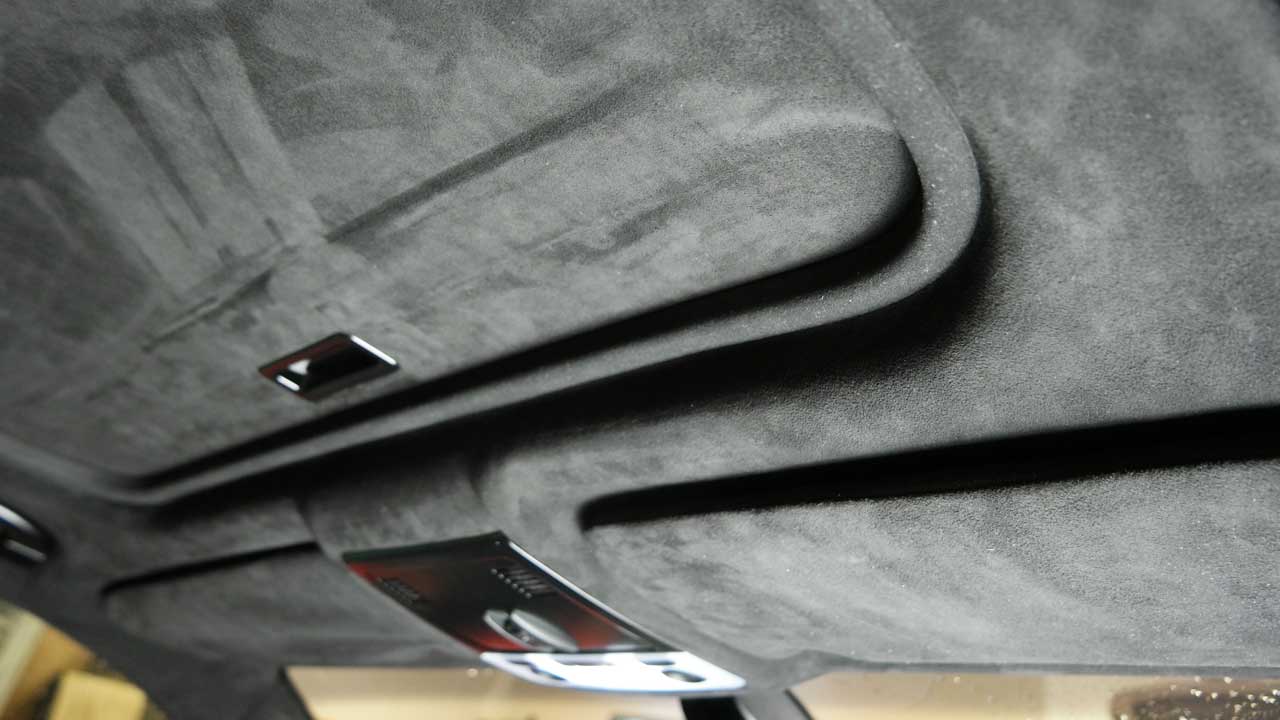
What is a Dinamica Headliner? Should I Get It on My Car?
The headliner is the fabric that covers the ceiling of a vehicle’s interior. Many cars offer an upgrade for a headliner made from Dinamica. Dinamica headliners are incredibly soft and have a beautiful, shiny appearance that make them an appealing upgrade for a vehicle’s interior. If you’re looking for a little extra luxury inside your car, a Dinamica headliner is a grade option.
How to Clean an Alcantara Steering Wheel
These instructions also apply for Dinamica and Ultrasuede.
Supplies Needed:
- Microfiber cloths (2-3)
- Soft-bristle brush (optional)
- Alcantara cleaner
Step-by-Step Instructions:
- Prepare Surface to Be Cleaned
- Use a soft-bristle brush or vacuum with an upholstery attachment to gently remove loose dirt and dust from the Alcantara surface.
- Spot Test the Cleaner
- Test the cleaning solution on an inconspicuous part of the steering wheel to ensure it does not discolor or damage the material.
- Apply the Cleaner
- Spray the cleaner lightly onto the microfiber cloth or mist gently onto the wheel. Avoid soaking the cloth or wheel surface.
- Clean the Steering Wheel
- Gently rub the cloth on the Alcantara in small, circular motions to lift dirt. Do not scrub too hard to avoid damaging the fibers.
- Use a Dry Microfiber to Remove Residue
- Use a clean microfiber cloth to wipe away excess moisture and cleaning solution from the wheel.
- Restore the Texture
- If the Alcantara feels stiff after cleaning, use a soft-bristle brush to gently fluff up the fibers in a circular motion.
- Let Surface Dry
- Allow the steering wheel to air dry completely before using the car. Avoid direct sunlight or heat sources.
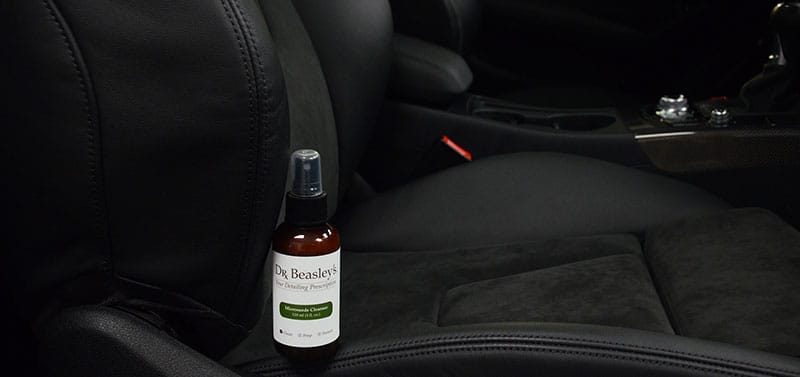
How to Clean Alcantara Seats
These instructions also apply for Dinamica and Ultrasuede.
Supplies Needed:
- Microfiber cloths (3-4)
- Soft-bristle brush or upholstery brush
- Alcantara cleaner
- Vacuum with an upholstery attachment
Step-by-Step Instructions:
- Prepare the Seats
- Remove loose dirt or debris from the seats with a vacuum cleaner using an upholstery attachment.
- Brush or Vacuum the Surface
- Gently brush the seats with a soft-bristle brush to loosen dirt embedded in the fibers.
- Vacuum the seats again to remove any loosened particles.
- Spot Test the Cleaner
- Test the cleaning solution on a hidden area of the seat to ensure it doesn’t discolor or damage the Alcantara.
- Apply the Cleaner
- Lightly spray the cleaning solution onto a microfiber cloth or mist onto seats. Do not over-apply.
- Clean the Seats
- Gently wipe the seats in small, circular motions, focusing on dirty or stained areas. Avoid excessive pressure to protect the fabric’s texture.
- Remove Excess Cleaner
- Use a clean microfiber cloth to wipe away any remaining cleaner or residue from the surface.
- Dry the Seats
- Allow the seats to air dry completely. Avoid direct sunlight or heat sources to prevent damage.
- Restore the Texture
- Once dry, gently brush the seats with a soft-bristle brush to restore the Alcantara’s soft, plush texture.
How to Clean an Alcantara or Dinamica Headliner
Supplies Needed:
- Microfiber cloths (3-4)
- Soft-bristle brush
- Alcantara cleaner
- Vacuum with a soft brush attachment
Step-by-Step Instructions:
- Prepare the Area
- Remove loose debris and dust from the headliner by vacuuming with a soft brush attachment.
- Inspect the Headliner
- Identify areas with stains, smudges, or dirt that require extra attention.
- Avoid heavy cleaning on areas where the headliner may already be sagging or damaged.
- Spot Test the Cleaner
- Test the cleaning solution on a small, hidden part of the headliner to ensure it does not discolor or damage the material.
- Apply the Cleaner
- Spray the cleaner lightly onto a microfiber cloth (not directly on the headliner). Avoid over-saturating the cloth.
- Clean the Headliner
- Gently wipe the headliner in small, circular motions with the damp microfiber cloth. Start with stained or dirty areas and work outward to blend clean spots with the surrounding area.
- Brush the Fabric
- If needed, use a soft-bristle brush to gently lift dirt and restore the texture of the Alcantara. Brush lightly to avoid damaging the material or loosening the adhesive backing.
- Remove Residue
- Use a clean microfiber cloth to remove any leftover cleaning solution. Be gentle and avoid soaking the material.
- Dry the Headliner
- Allow the headliner to air dry completely. Do not use a heat source, as it may loosen the adhesive or cause sagging.
How to Keep Microsuedes like Alcantara & Dinamica Looking Good Long Term
The key to maintaining a beautiful appearance and soft texture on microsuedes like Alcantara and Dinamica is to clean as-needed and protect early on with a ceramic coating designed for faux suede fabrics. Here’s a tutorial on how to apply a ceramic coating for Alcantara:
- Clean the Alcantara/Dinamica/Ultrausede
- Start with a small area. Ensure the surface to be protected is fully clean so the ceramic coating bonds properly.
- Brush Fabric Forward and Apply Ceramic Coating
- Brush the fabric in one direction, then apply ceramic coating by misting from six inches away.
- Brush Fabric Backwards and Re-Apply Ceramic Coating
- Brush the fibers in the opposite direction and re-apply the ceramic coating to get full coverage on the microsuede.
- Re-Apply Until All Surfaces Are Covered
- Continue to the next small area until all surfaces with faux suede are coated.

